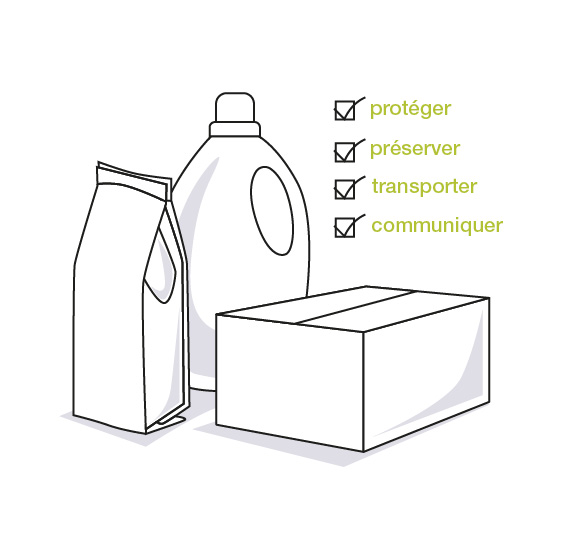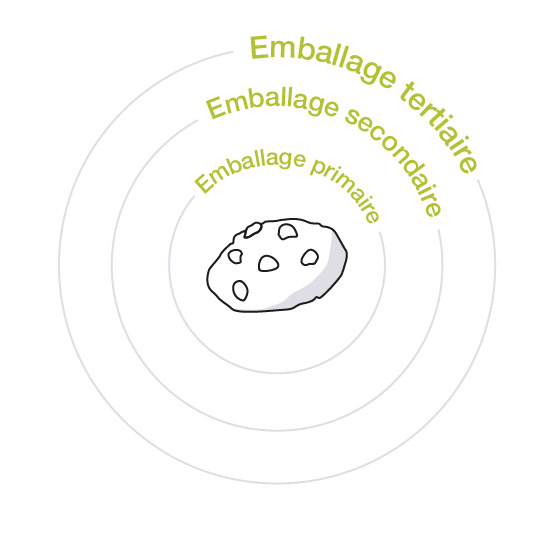Environmentally-friendly design is the new challenge for cosmetics brands. Recyclable flexible packaging, innovative design, natural products... All about cosmetics packaging!
The evolution of cosmetics packaging
Packaging is the first link between a brand and the consumer. That's why it makes such a significant contribution to a product's success, particularly in cosmetics, where it's all about appearance. Nevertheless, cosmetics is more than just an aesthetic story. It's also a way of improving your quality of life, seeking wellness, and feeling in tune with yourself. We're not just talking about make-up and beauty, but also hygiene and self-esteem. Taking care of one's body is more than just a desire - it's a need, which is why the world of cosmetics raises fundamental questions about human dignity.
That's why cosmetics packaging is now facing up to the challenges of environmentally-friendly design. The impact of cosmetic waste on the environment has raised the awareness of consumers, who are increasingly turning to responsible purchasing.
How is the cosmetics packaging sector evolving today? How is packaging designed and what issues are companies facing? Here is our report.
Towards an environmentally responsible cosmetics packaging
For some years now, cosmetics brands have been opting for environmentally-friendly design, both for their products and their packaging. Why this change in the market? How do you combine environmental friendliness with new packaging? Sealester answers these questions.
The function of packaging

Are you thinking about the material and design of the packaging that will preserve your cosmetic products? Kraft pouch, recyclable doypack, reusable packaging... Don't forget that before being environmentally responsible, packaging must fulfil the following functions :
⦁ Physical protection of the product, especially during transport ;
⦁ Preservation of the quality of the content ;
⦁ Visual and/or textual communication about the product

But that's not all! When creating packaging for a type of product, we also think about primary, secondary, and tertiary packaging. Here are the differences :
⦁ Primary packaging is in direct contact with the product (e.g., glass cream pots).
⦁ ⦁ Secondary packaging wraps several primary packages, to over-protect the containers (e.g., cardboard containing several boxes of make-up);
⦁ ⦁ Tertiary packaging includes secondary packaging to facilitate transport (e.g., pallets covered in stretch film).
The emergence of environmentally-friendly design in cosmetics packaging
Although practicality was originally the main criterion for selecting packaging, environmental issues have changed this order of importance. For example :
⦁ Most synthetic materials take decades or even hundreds of years to degrade in nature ;
⦁ In 2016, 310 million tonnes of polymer waste were generated ;
⦁ In 2020, the boom in e-commerce means 500 million parcels delivered in France, with 43% of their volume was empty

Today, more than half of French consumers are aware of the ecological impact of packaging. From now on, the choice of material, manufacture, transport, use, and end of life must contribute to reducing waste and pollution worldwide. That's why many cosmetics companies, including members of the Fédération des entreprises de la beauté (FEBEA) [Federation of beauty companies], are committed to a circular economy approach.
Cosmetics packaging: fashionable practices
Every year in France, the cosmetics market is worth €13 billion. To break into this market, each company deploys its own marketing techniques: brand identity, consumer experience, technological innovation... and, of course, environmentally-friendly design! Here are the major trends in environmentally-friendly cosmetics packaging that are proving their worth.
Cosmetics in all their forms
Do you know what soap, shampoo, conditioner, skincare products, deodorant, and toothpaste all have in common? They're solid! At least at some companies such as Lush and Les savons de Joya, which offer natural and vegan cosmetics. Changing the state of a cream or shampoo into a solid version avoids polymer packaging and the dumping of chemical compounds into groundwater.
Other companies, such as Klorane have chosen to switch from liquid to powder form to minimise the use of polymer in the bathroom. For example, you can look after your skin and hair with a washing powder mixed with water. This design allows to keep the items in a recyclable pouch.
Environmentally-friendly refilling: reducing cosmetic waste
With some brands, it is possible to reuse packaging without having to modify it. With the environmentally-friendly refill system, consumers keep the original container for as long as possible. The Clarins group was the first to think of it in 1992, when it launched a range of refill bottles for Mugler perfume. Since then, environmentally-friendly refills have become increasingly popular in the world of beauty and skincare. Le Petit Marseillais and Dove offer flexible or berlingot-sized soap refills, Guerlain a refillable lipstick, Make Up For Ever a make-up palette with eyeshadows that can be magnetised inside...
Making a success of the environmentally-friendly design of cosmetic packaging
Recyclable flexible packaging, environmentally-friendly refills, compostable materials... What design and material should you choose for your cosmetics packaging? Here are the constraints and solutions for the beauty and body care sector.
New issues in the cosmetics sector
The French want naturalness, and the cosmetics and luxury goods market is no exception. Increasingly demanding consumers, more stringent standards, associations that monitor brands' compliance with their commitments... It's not always easy for beauty and care companies to carve out a niche for themselves
Environmentally-friendly design is the answer to all these demands. It involves making packaging more environmentally friendly from the very first stages of the design process, by using materials that can be recycled, reused, or easily composted. However, this environmentally-friendly design must also enable the company to stand out from the competition while maintaining affordable prices. An organic product, which often follows an ethical and responsible certification process, will often have to be sold at a higher price than an industrial product. Innovative packaging is likely to increase this price even further. Nevertheless, by reducing the quantity of material used, the company can reduce its costs in terms of raw materials, transport, and logistics. Flexible packaging is the ideal solution for meeting the constraints of the organic market. It's practical, lightweight, customisable, and saves materials! Although it is often associated with the food industry, environmentally responsible flexible packaging is also a good way to stand out in the cosmetics sector.
Cosmetics packaging according to Sealester
Would you like to create environmentally-friendly packaging for your natural cosmetics? Sealester technology lets you design flexible packaging that reflects your identity. Wrap your products in mono-PE polymer or apple paper to stand out from the crowd. Flexible packaging offers a wide range of designs, shapes, colours, and materials. Mono-material film, recyclable materials and much more ...
We design your environmentally-friendly perfume refills in flexible bottles, your cream and soap samples and your 100% personalised Doypack pouches using our digital sealing system.